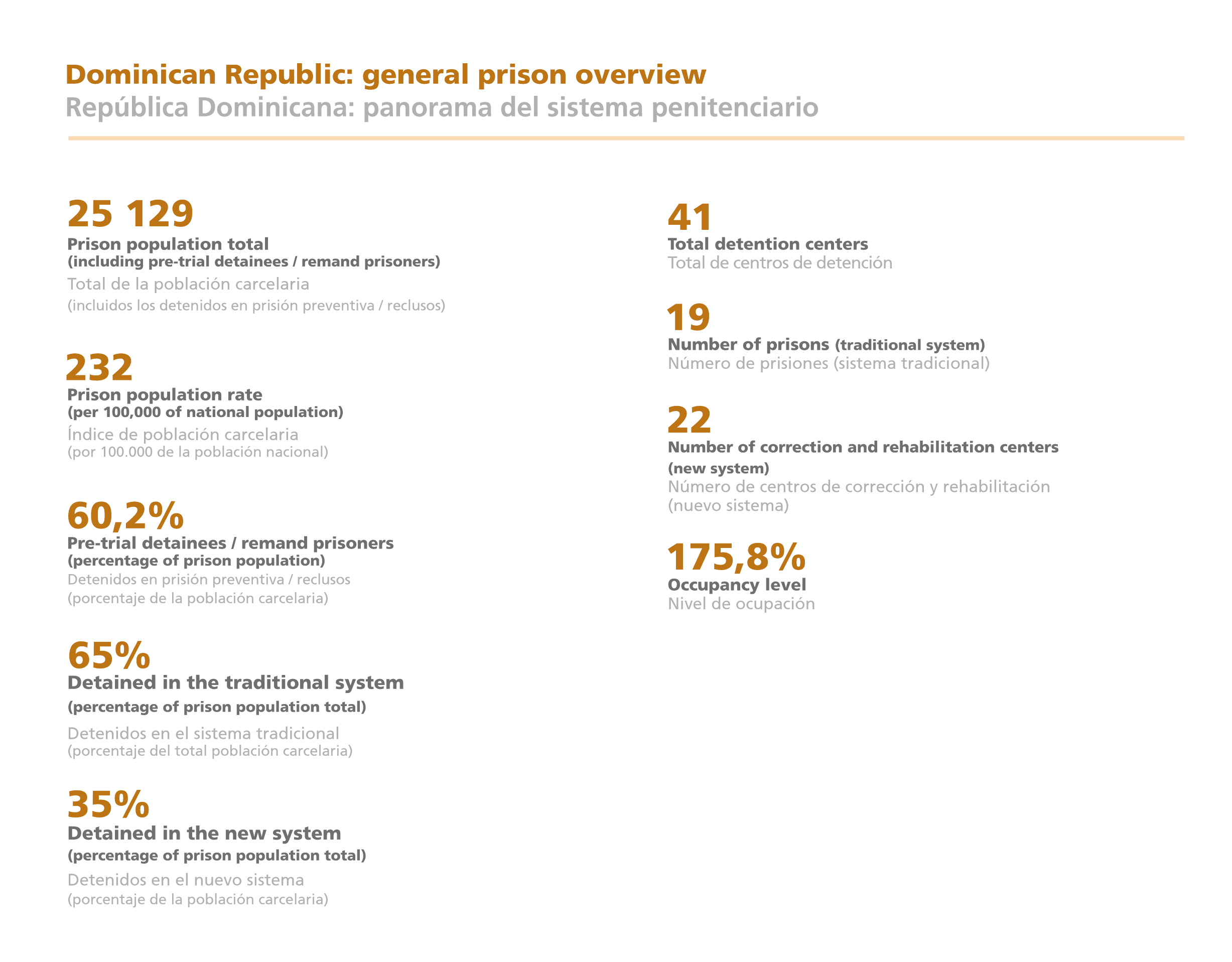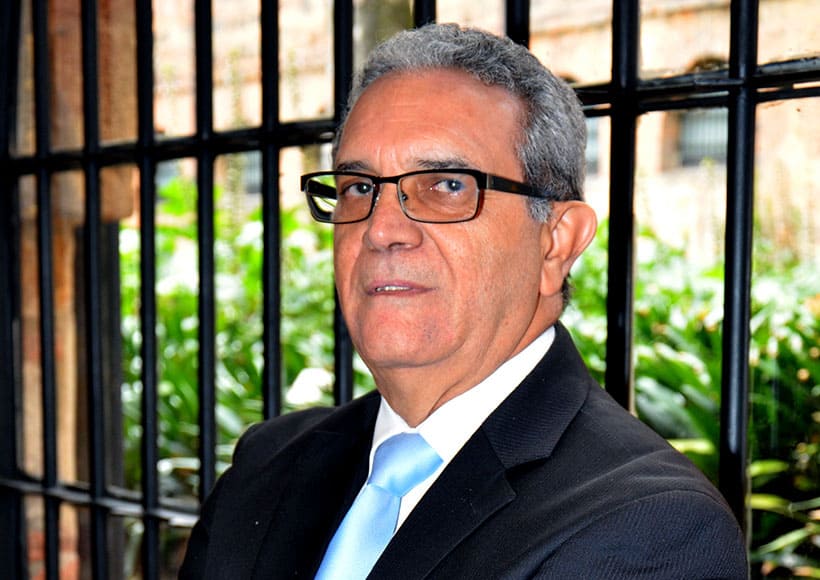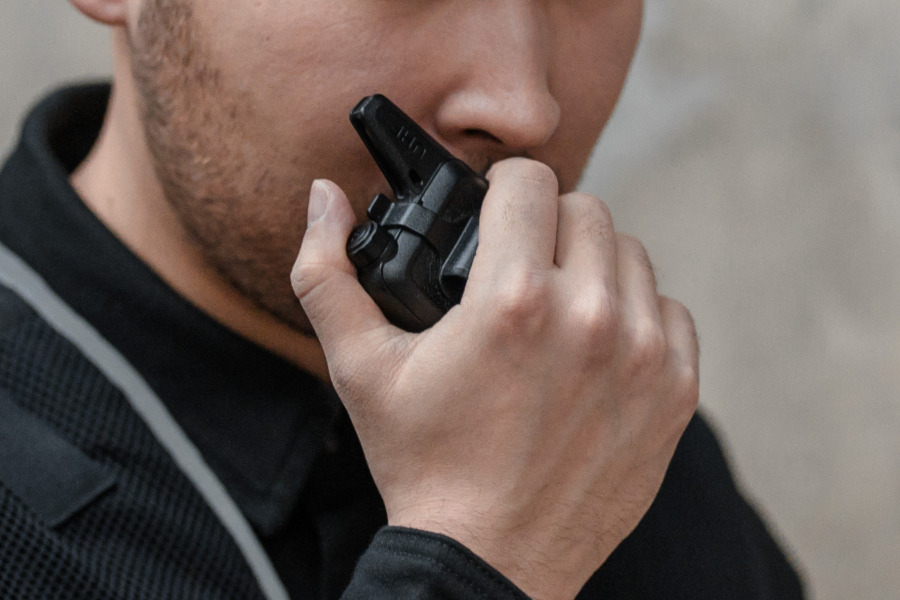// Interview: Ysmael Paniagua Guerrero
Coordinator of the New Penitentiary Management Model of the Dominican Republic
Background:
In the Dominican Republic, two prison systems coexist the traditional one – managed by police and forces of the military body – and that of the new model (civilian body specialized in treatment, management and prison security).
The New Penitentiary Management Model entails a shift in the paradigm of the treatment of prisoners, which takes into account their fundamental citizenship rights, even though they are in conflict with the law and criminal justice.
With the foundation of the National Penitentiary School since July 30th, 2003, the formation of Prison Surveillance and Treatment Agents (VTPs), of professionals and technicians, enabled the opening, in 2004, of the first Correction and Rehabilitation Center (CCR), initiating the operation of the great New Model of Penitentiary Management of the Dominican Republic.
After one year of intensive training, the VTP agents are incorporated into the staff that are already performing functions at the Correction and Rehabilitation Centers (CCRs). Thus, there is a distinction not only conceptual, but also terminological, between the old system and the new, since in the first one speaks of prisons and guards, whilst in the second there are correction and rehabilitation centres, surveillance and treatment personnel.
Presently, the Dominican penitentiary reform is intended to cover an increasing proportion of the system, through political will, external recognition and also the affirmation as an optimal penitentiary model for neighbouring countries.
JT: What are the differences between the new penitentiary model and the traditional model?
YP: The differences are abysmal. The traditional system does not have the created conditions, nor the adequately trained staff or the management model to guarantee and respect the fundamental rights and the dignity of the prisoners.
In the traditional system, a culture founded in vengeful justice reigns, which is plagued with bad practices, which make the system inoperative turning the fulfilling of the prison sentence into a true hell.
The various claims against the system of vexations, extortions and existing corruption against the recluse population make the dismantlement of the militaristic and police-centred view of the penitentiary system imperative.
The Dominican penitentiary system has forty-one (41) facilities, of which twenty-two (22) belong to the New Model of Penitentiary Management, in which the Vigilance and Penitentiary Treatment Agents are responsible for the security, and the Police and National Army is in charge of the other 19 penitentiary centres – those with the traditional model.
Our personnel (VTP agents) are recruited from civil society, and then specialized, and trained for a year in the National Penitentiary School, with a battery of legal, psychological and treatment training.
The training is carried out, on a regular basis, in the National Penitentiary School, with internship and residential courses in the correction and rehabilitation centres. The VTP agents and all staff, according to their function and the hierarchy, receive a continuous education (update) to implement improvements and contribute to keeping the excellence.
We also give personalised training to a part of the personnel in the Ministry of Defense Counter-Terrorism Command and with the Special Forces Command of the Airforce, to whom we are truly grateful for this support which they have given us. We have personnel that have the capacity to react to any circumstance.
At the correction and rehabilitation centres of the New Penitentiary Management Model all human rights are respected; the Constitution of the Dominican Republic states in article 40, numeral 16 that: “Custodial sentences and security measures will be oriented towards the re-education and social reinsertion of the condemned and cannot consist of forced labour”, an aspect which we fully comply with, as well as the ones in the Law 224-84 on the Penitentiary Regimen, treaties and agreements on the matter of human rights concerning people deprived of liberty, signed and ratified by the Dominican State.
When a prisoner is entered into the new system, all juridical information is collected, a medical analysis, a social and educational upheaval are done. With all this information we create a protocol which we call the unified treatment protocol taking into consideration their medical and juridical condition, as each person deprived of liberty needs a personalised treatment according to their situation.

JT: Which is the mission the detention centers of the new model?
YP: We are in charge of the treatment to bring out the best that the inmates have in their hearts, develop them from the ethical, moral, educational, professional, human, artistic and productive point of view, and create a familiar atmosphere in spite of the deprivation of their liberty.
To create a space where they feel they have the possibility and opportunity to be reinserted in the society, able to abide by the law, is a task and obligation of the state and government. Inmates will be better citizens if they fulfil their sentence in a centre belonging to the new system.
With the new juridical order, we try to attain the human aspiration of life dignity, which cannot be mutilated with the deprivation of freedom.
It is about developing a restorative justice system, plural, safe, with the full guarantee of life and human rights, and it is the result of the Justice reform that came after the electoral crisis and signing of the political agreement in 1994.
JT: How can you describe the day-to-day life of a person who is fulfilling a sentence in the correction and rehabilitation centers of the New Penitentiary Management Model?
YP: Inmates are kept completely busy, permanently organized with a regimental timetable of education, work, art, and sports. We have a 100% educational offer; 53% of the inmates are included in basic and middle education programs, and we have more than 350 inmates in university education.
They work in greenhouses, in farms, in agriculture out in the open air, in handicrafts, in the metal-mechanical industry, which is where all beds required in the new penitentiary model are made.
They also work in the furniture industry, the textile industry, leather and fur industry, in shoe production… It is an extraordinary thing: it is the most productive space of the Dominican Republic in proportion to the number of people and space, where the greatest ratio of people study in proportion to the country.
With the new penitentiary model, we try to attain the human aspiration of the dignity of life, which cannot be mutilated by the deprivation of freedom.
JT: What do the statistics say in regards to the social reintegration rates after having fulfilled a sentence in the new model?
YP: A better insertion in the society is almost sure: we have more than 95% of the inmates reinserted in the society. And the reoffending rates are among the lowest in the world being under 5%.
JT: There are people who refuse to fulfil their sentence in the new system, what can be said about that?
YP: The new model is a rehabilitation regimen, as the Constitution says, the objective of a prison is to re-educate for the reinsertion. So, if this is the case, they cannot continue doing the same thing, breaking the laws and procedures in the prison; they have rights and obligations.
So, the poorest don’t want to be with us, the big heads of organized crime and drug-traffickers don’t want to be with us either, bankers, the big magnates don’t want to be with us…
Because each wants to do what they want and here that is not possible because they have a regimen that determines that at 6 o’clock in the morning the centre activity begins: the inmates have to clean their space, make their bed, take a shower, they have to come to the canteen to eat breakfast, they have to do work activities, education, arts, cultural activities. There is no idleness in the centres, it is a regimen full of life.
We have psychologists, doctors, social workers, an education team; we provide an integral life, one that many people that are free do not have.
JT: Let’s talk about La Victoria, for example, which is the biggest prison of the country and still continues to be directed with the traditional system. Which is the goal?
YP: We are working so that all prisons will be managed according to the new model. La Victoria is the Achilles heel of the human rights in the Dominican Republic. To solve the problem of La Victoria we have to build a penitentiary city because there are more than 8000 inmates.
And, preferably, we will have to build that city in another place, or build several penitentiary complexes with the capacity to take in from 780 to 1000 people each. We are working to eliminate the overcrowding, the Dominican people don’t deserve to have a prison like La Victoria and like those traditional prisons.
The Dominican Republic has advanced a lot, we are living in a Welfare, Democratic Rule of Law State which has improved its international image, and the new penitentiary model is in many corners of the world, in various continents.
The United Nations have decided, on more than one occasion, that the penitentiary model of the Dominican Republic – as Don Elias Carranza says “the Dominican penitentiary miracle” – is acknowledged to be the best for Latin America.
JT: With the investment that it demands, is there willingness from the Dominican Government to do this transformation, in the prisons that still haven’t taken on the new model?
YP: I believe that there is a willingness from the Government, but not all the support. It is the Government that has to decide to conclude the reform, however, it requires a bigger demand on the country’s sectors and a better understanding.
It is a big investment that will cover itself when it accomplishes lowering the reoffending rates of more than 60% to less than 5%… It will be saving lives and avoiding that organized crime and the drug mafia takes control of important sectors of the society.
JT: Do the facilities of the new model offer the necessary security of the most dangerous inmates?
YP: Yes. The big criminals, the big cases of organized crime, drug trade and the notorious cases – although not necessarily being a highly dangerous person – are sent to the new model by the fiscal attorneys and the judges because we have a better control of communication and an extraordinary reduction of cellphones.
Only occasionally do we find mobile phone; the mobile phones that are used to communicate with family – which is an inmate’s right – belong to the facility. In some cases usage of computers is allowed for tasks to be performed for the university.
There are more than 350 inmates that are doing their undergraduate studies in Law, Psychology, Education, Computer Science and other. They’re able to do these in various ways, but the majority does them from prison, we have a regional university centre, together with the country’s universities.
We are developing the full educational cycle for the inmates (literacy, basic education, middle education, technical education, university) and soon also masters directed at inmates, with the required profile, something which does not happen anywhere in the world.



JT: Which is the current situation regarding alternative measures to imprisonment?
YP: We have a great number of people that are fulfilling their sentence semi-open, it could be for various reasons – some are under supervision and others are not.
There are more than 1000 people in that situation, and we have hundreds of people that we are keeping track of semi-open. There are conditions in which there is no tracking: the release on bail is one condition of semi-open which can and should imply tracking, that’s why so many people escape from the judicial persecution through the condition of release on bail.
Semi-open is a very wide concept that has different characteristics; Semi-open also is conditional freedom. Conditional freedom is offered to an inmate who has fulfilled more than half of the sentence, as the law establishes.
Other benefits are different by a third of the sentence, other benefits are being at home during the week and the weekend in prison, another is leaving on a daily basis to work or study, we have many inmates with that condition, as all these variables allow us to track and follow up.
Even the inmates themselves report through their cellphones from work or will have to report to the employer or to the workplace where they work.
My mission is to redeem the captives.
I believe in freedom. We train people to work for the freedom – it is a different paradigm – and in our correction centres we work for the freedom, not for the prison, because the concept is to return these people to their freedom, to their capacity and will to abide the law, with tools that will allow them to generate wealth.
The United Nations has decided that the penitentiary model of the Dominican Republic is the best for Latin America.
JT: The first center of the new model had its opening in April 2004 and the National Penitentiary school exists from the 30th of July 2003. Towards which future are you heading to?
YP: The National Penitentiary School (ENAP) is taking steps for the habilitation of the Superior Academy for Penitentiary studies (ASEP) to develop technical specialized study programs, degrees (graduate in Penitentiary Sciences, in Correctional Education and in Criminology), post graduate studies and continuous education for the adequate training, capacitation and actualization of the correctional service personnel and the integral penitentiary career.
Forty-nine (49) professional civil servants have been trained and enrolled in the Professional Master in Penitentiary Administration (2011 – 2013) in the Faculty of Economic and Social Science of the Autonomous University of Santo Domingo, and currently, there are 44 professional civil servants taking the second Master in Penitentiary Administration (2016 – 2018).
In this perspective, four master programs have been designed: in Management of Education and Penitentiary Treatment; in Ethics and Penitentiary Values; in Criminology and Penitentiary Law and in the Management of the New Penitentiary Model (2017-2019), the latter in a blended study mode.
We advance systematically towards an integral training system, an academic and occupational career based on the commitment to peace and safety.
Education and the ethical and moral values are part of the main platform of human and social development of the New Penitentiary Management Model, which allowed, in these 13 years of reform, 18,274 people to have participated in 472 educational programs developed by the National Penitentiary School.
With all this work we are trying to ensure the permanence in time of the new model, through a wide program of production of goods and services on a national scale, which substantially contributes to the economic sustainability of the penitentiary reform.
We are also amplifying our social tools, vouching for the Dominican penitentiary reform with the integration of new sectors of the national, business, religious, communicative, and educational life. The goal is to keep the quality of the reform up to date, through an effective supervision of the fundamental actors in the national life.
With regard to the interest of the international community – institutions, organisms specialized in penitentiary matters, ministers, Government workers and Latin American and Caribbean states – in the national best practices, it is recommended, for the implementation of the reform and improvements in regional penitentiary systems, to establish an educational institution to train the qualified human talent, with an humanistic vision, eliminating the police and militaristic practices, and progressively implement the total conversion of traditional centers towards the New Penitentiary Management Model.
We keep on advancing and steadily contributing to the human development, to the social inclusion and the necessary peace and safety of the Dominican society and brother countries.
//
Dr. Paniagua is the manager and promoter of the Dominican penitentiary reform. Director General of the National Penitentiary School (ENAP) and National Coordinator of the New Model of Penitentiary Management (NMGP) of the Attorney General’s Office, since August of 2012. He holds a doctorate in Law and a degree in Advertising from the Autonomous University of Santo Domingo (UASD). He is also a graduate of the Master in Penitentiary Administration of the Autonomous University of Santo Domingo (UASD).


